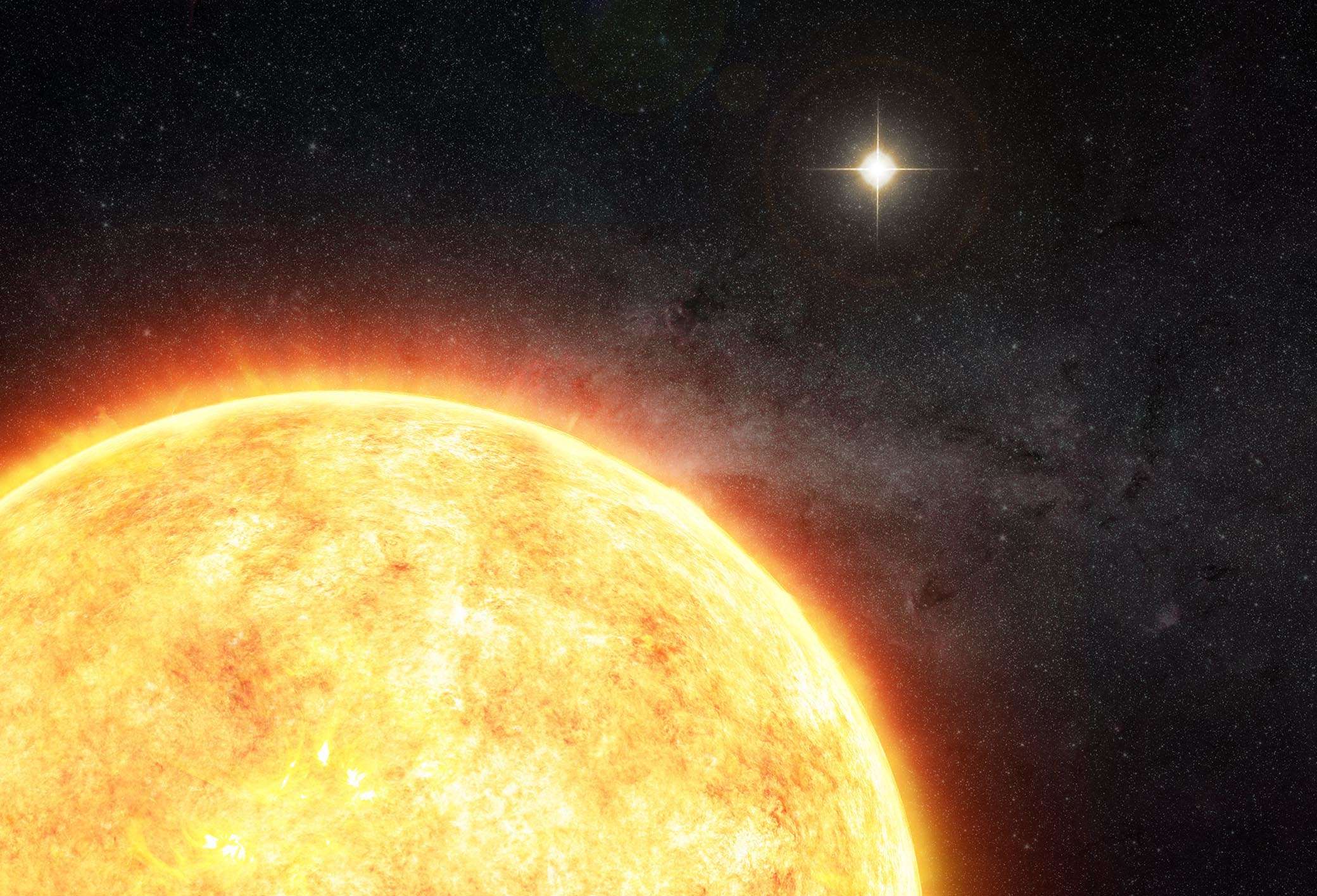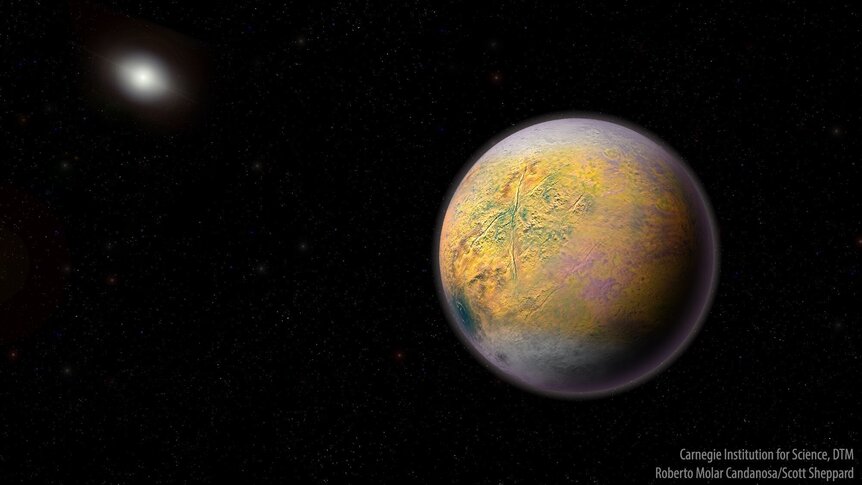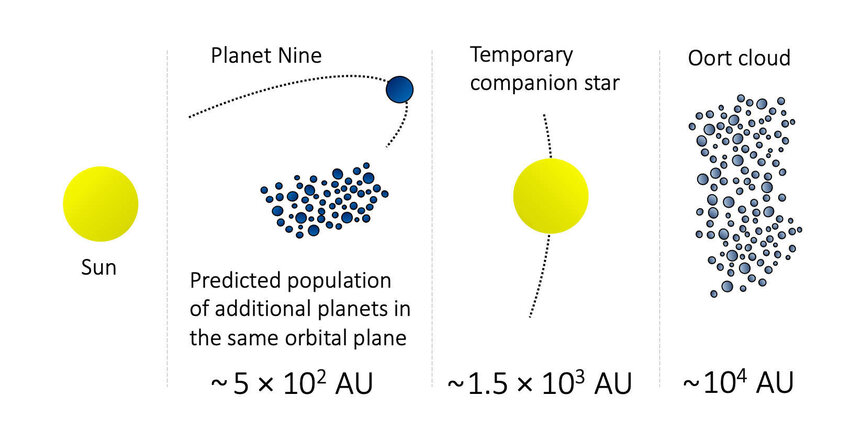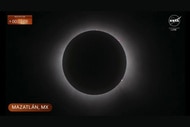Create a free profile to get unlimited access to exclusive videos, sweepstakes, and more!
Was the Sun once part of a binary star system?

The Sun is single, a solo star traveling around the galaxy.
But… did it once orbit another star? In the distant past, could it have temporarily had a traveling companion, been part of a binary system?
That's not a silly idea. Half the stars in the galaxy belong to binary or multiple systems, so a star is just as likely to be in one as not. This idea of the Sun once being in a binary has been around a long time, but a new paper takes a look at the possibility of the Sun having a companion for a while shortly after it formed as a way to explain a couple of odd things about our solar system, including the presence of Planet Nine, a theorized ninth planet orbiting the Sun far out past Neptune.
Astronomers think Planet Nine (or just P9) exists due to an alignment of the orbits of several smaller bodies also very far out from the Sun. But it's weird; it would have to be much more massive than Earth, and it's not easy to form such a planet that far out (it would orbit the Sun on an elliptical path about 75 billion km from the Sun; for comparison Neptune is about 4.5 billion km out).
It's possible P9 once orbited another star that passed close to the Sun, and the gravity of our star stripped it away, the Sun keeping it for its own. But the physics of that makes it hard to do as well; usually in an encounter like that the planet gains so much energy that it gets flung away from both systems.
But that's if the Sun is alone. If instead it were part of a binary system when it was young the capture physics actually gets easier; in many cases the two stars work together to minimize the added energy to the planet, allowing it to be captured by one of the stars.
Assuming that's the case with the Sun, there are some things you can say about what the possible companion star would have been like. In general, the star would have to be about three times farther from the Sun than P9 for the planet's orbit to be stable (otherwise the gravitational influence of the second star will destabilize the planet's orbit). That means the Sun's alleged companion would had to have been at least 225 billion km out. Assuming it had the same mass as the Sun (most binary star components have roughly equal mass; that happens naturally in the way they form) that makes capturing and keeping P9 twenty times easier than if the Sun were solo.
In fact, the astronomers in the paper note that according to their work a lot of other large bodies would've been captured along with P9, which is a testable prediction. The Vera Rubin Telescope — a monster 8.4-meter mirror telescope equipped with a staggering 3.2 gigapixel camera — will go online in a few years, and is the odds-on bet to find P9 if the planet exists. If it finds other objects in similar orbits, that will give the solar binary hypothesis a big boost.
They also point out that a binary companion also solves some other problems in our solar system. For example, the icy bodies orbiting past Neptune come in different groups. One is called the scattered disk, and is comprised of objects that have highly elliptical and tilted orbits, probably flung out into that region of space by encounters with the gas giants, most notably Neptune. Another is the outer Oort Cloud, a huge spherical volume of space about a trillion (!!) kilometers from the Sun. There are roughly 10 times as many outer Oort Cloud objects as there are in the scattered disk, but according to most hypotheses on the solar system formation that number should be somewhat lower. In the paper, the astronomers find that the binary idea naturally produces the correct ratio. Interesting.
So if the Sun had a binary companion, where is it? It's clearly not there now; a star like the Sun 200 billion km away would be as bright as the first-quarter Moon! You'd think we'd have noticed by now.
If it ever existed, it's long gone. Most stars are born in stellar clusters, groups of hundreds or even thousands of stars, so it's not a stretch to think the Sun was born in one 4.6 billion years ago as well. Encounters between stars are very likely in such a crowded volume of space. If even a low-mass red dwarf with one-tenth the Sun's mass passed about 300 billion km away it could disrupt the system, ejecting the Sun's erstwhile companion. It's probable the Sun would've only kept the companion for about a hundred million years before losing it, a short period compared to the Sun's current age.
So for the moment, this is a very interesting idea, but highly theoretical. Hopefully it won't be too long before Planet Nine is found, and then maybe we'll have some observational evidence too. We still don't know a lot about the actual conditions and environment for the young Sun. Maybe soon we will.















